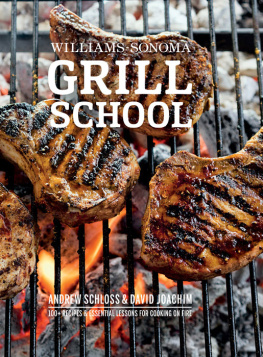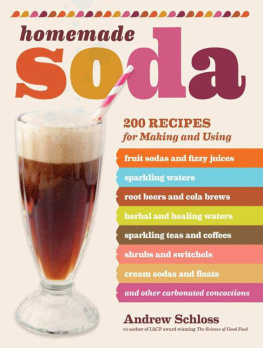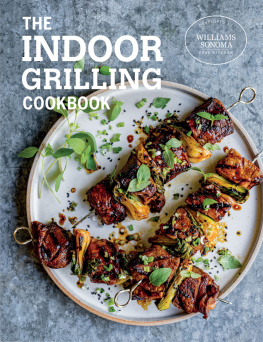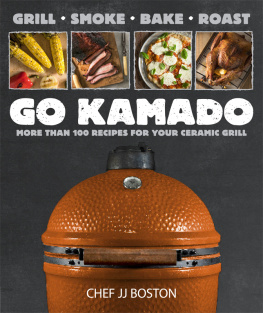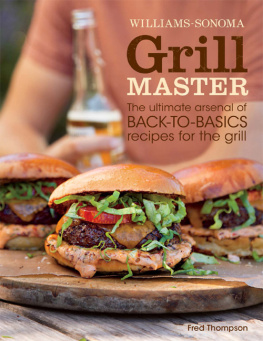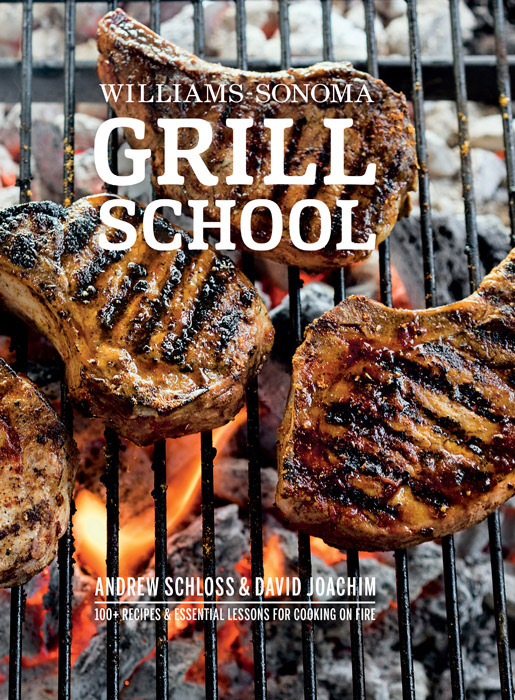WILLAMS-SONOMA
GRILL
SCHOOL
ANDREW SCHLOSS & DAVID JOACHIM
PHOTOGRAPHY BY RAY KACHATORIAN



Grilling with Class
Whatever you do, do it well. Walt Disney
Food + fire. Is there anything more basic than grilling? Is there anything more elemental in the ever-expanding world of the culinary arts? Alongside modern methods such as sous vide and rotary evaporation, grilling may even seem like mere childs play, a rudimentary cooking technique that anyone can do.
Why, then, is grilled food so often served burnt, dried out, and completely devoid of sophistication? The answer is simple: turning out perfectly grilled food requires skill and a fundamental understanding of how cooking works. All cooking methods involve the manipulation of time, temperature, and moisture, culinary building blocks born in the blistering crucible of live-fire cooking. To grill well is to comprehend the very foundations of good cookery. In other words, grilling a steak is a process that must be done well to prevent it from being well-done.
For us, the goal of grilling is to give food a deeply browned, smoky-tasting crust while maintaining a juicy, meltingly tender interior. If you know the dynamics of fires effect on food, such gustatory pleasures are completely within your grasp. Weve spent years learning about these dynamics while practicing, studying, and traveling throughout the world of outdoor cooking. Weve discovered what works and what doesnt to achieve that elusive goal.
In this book, we lay out everything weve learned, including our best tips and recipes. These pages reveal the art and science of various techniques that ensure perfectly grilled food every time. The nitty-gritty appears right up front in two chapters focused on how different grills work and how to use them effectively for direct and indirect grilling, rotisserie grilling, low and slow barbecuing, cooking in the hot embers, wrapping food in leaves or aluminum foil, and grilling on planks. The remainder of the book is structured around easy-to-follow lessons followed by recipes that demonstrate the principles of each lesson. For example, the burger lesson explains that the best way to make a juicy grilled burger is to add water that was lost when the meat was ground. Once you know that, you can experiment with more imaginative liquids, like five-spice soy sauce, roasted-garlic Worcestershire sauce, and herb-infused red wine. Youll also find out that water or another liquid is the key to getting smoke to stick to food when barbecuing. Armed with that knowledge, you can play around with water pans, spritzes, mops, and bastes in varying flavor combinations to create your own signature brand of smoke-infused barbecue.
Throughout the book, we also share insights on things like wild versus farmed fish, wet versus dry brining, and baby back versus St. Louisstyle ribs. Youll discover little nuggets on grilling everything from beef rib steaks and pork rib chops to pork belly, whole birds, shellfish, pizza, cake, and all manner of vegetables and fruits.
The recipes are written as templates of technique with an emphasis on global flavors. Alongside . Use the recipes as springboards for your creations. The Extra Credit ideas should get your creative juices flowing. For example, if you grill burgers often, you may soon find yourself crafting elegant stuffings, embellishing with stylish garnishes and sauces, and elevating flavors with rubs and glazes.
Just avoid the temptation to convince yourself (or your guests) that burnt food tastes delicious. A little char is welcome. A lot of burn? Not so much. Even when preparing simple foods like boneless chicken breasts, the process of grilling should be done with skill and some class. Approach the grill with style and grace. Your guests will thank you for it.

Andrew Schloss

David Joachim


EQUIPMENT
TYPES OF GRILLS
You can grill without any equipment at all. A fire and a long stick are all you need to cook a steak. But most grillers appreciate their tools, and a well-built modern grill does make it easier to control heat and get consistently delicious results. When we talk about grills, we mean any physical structure designed to contain and control fire for the purpose of cooking food. Every grill has two basic parts: the firebox where the fire burns and the grilling grate on which the food cooks.
Three things distinguish most grills from one another: size, materials, and fuel source. The dimensions of the grilling grate and the cover height largely determine the available cooking space and the grilling techniques for which the grill is best suited. The grill can be constructed from any inflammable material, with steel, ceramic, and aluminum the most common, though fireplace grills are usually stone or brick. The density and the heat conductivity of the material partially determine the grills overall cooking characteristics. Finally, the fuel source can be gas, charcoal, wood, or any combination.
When evaluating a grill, always consider all three factors. Also think about how often you grill and the amount of food you typically cook at any given time. The grill you buy should have ample cooking space for your average meal, but its a good idea to go a little bigger than you think you will need. Having more space allows you to better manage flare-ups, and it gives you the opportunity to stretch your grilling chops, taking on more elaborate grill projects as your skills increase. Large roasts, like a whole turkey, a leg of lamb, or a prime rib, need a cooking area of at least 600 square inches (1524 sq cm) or 22 inches (56 cm) in diameter, preferably more. A larger grill allows you to cook both small and big foods.
The next thing to consider is the style of the grill, covered or uncovered, rotisserie-enabled or bare-bones hibachi. Heres a list of grill types ranging from simplest to most tricked out.
CAMPFIRE GRILL
This inexpensive grill rests over an open fire. It does not have a firebox. Instead, it has an adjustable-height iron or steel grill grate attached to a single stake or to two T-shaped legs that suspend the grate over the fire. Heat is controlled by the amount of coals you rake beneath the cooking grate and by adjusting the grate up or down. Campfire grills are suitable only for direct grilling methods. A fireplace grill (aka Tuscan grill) is similar, designed to fit into the constricted area of a fireplace. This type does not always have an adjustable grate, however, so you need to make sure the grate is elevated enough to be at least 4 inches (10 cm) above the coals of the fireplace.

